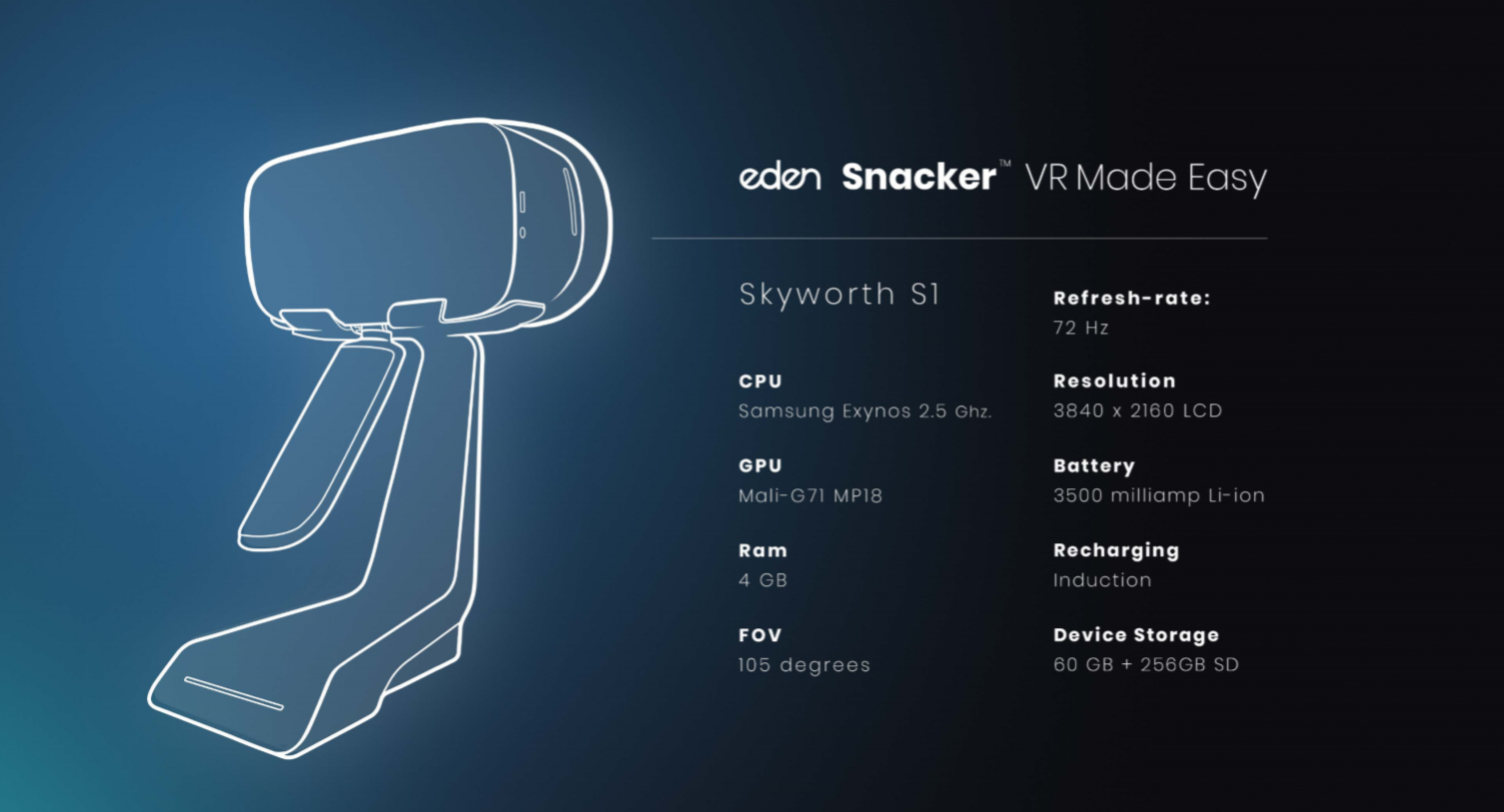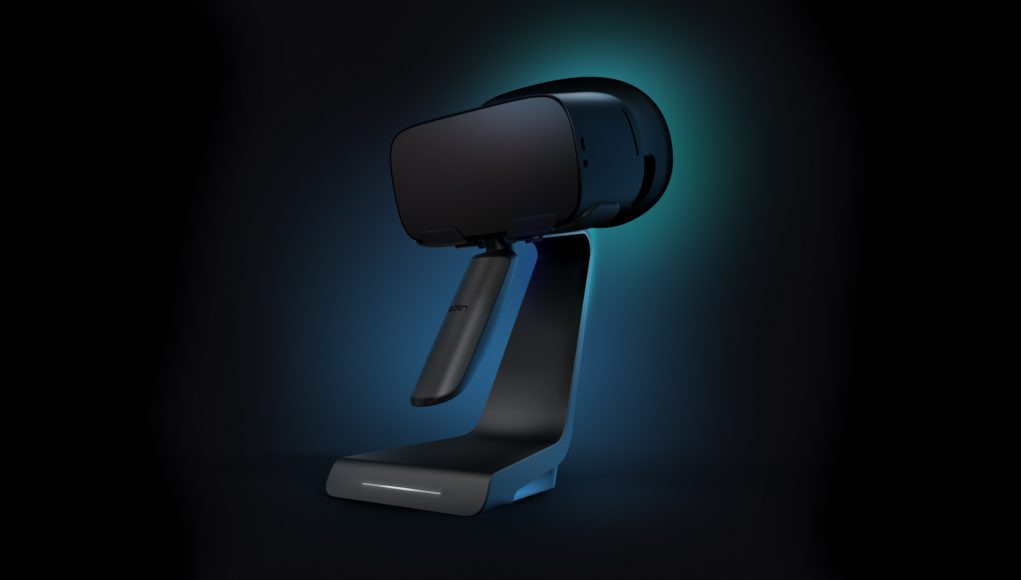When it comes to public spaces like shops and museums, self-service virtual reality isn’t really a thing yet; first-timers generally need to be told how to put on the headset, how to hold the controllers, and where to stand. And let’s face it, most everyone on the planet is a VR newcomer at this point, meaning you’ll need an attendant to handhold users the entire way through. That’s where South Africa-based EDEN Labs wants to change things up with its enterprise-focused VR headset platform, the Eden Snacker.
The Snacker isn’t meant for the sort of games you might normally think of when VR comes to mind like Beat Saber (2018) or Job Simulator (2016). It doesn’t have controllers, and only features 3DOF head tracking; what it does have is a decidedly more approachable opera glasses-style design that lets you hold the headset with one hand so you can press it to your face without needing a headstrap, which could otherwise ward off some users.
In short, it’s the sort of headset that’s designed for quick jumps into casual VR content like 360 video and photos which ideally finds a home in places like shops, museums, expos—basically anywhere you might want to give the public a more immersive viewpoint but aren’t looking for the whole megillah of a 6DOF platform like Oculus Rift or HTC Vive.
Based on the standalone VR headset Skyworth S1, a little-known 3DOF headset from the eponymous Chinese consumer electronics manufacturer, the platform boasts a total display resolution of 3,840 × 2,160 (1,920 × 2,160 per lens), a LCD clocked at refresh rate of 72Hz—a notably higher resolution than Oculus Go’s 1,280 × 1,440 pixels per-lens LCD panel.
Besides the headset, stand, and detachable hand grip, the platform also includes a tablet-based user station so you can easily pick an experience before popping into VR. This would likely require an attendant, but its easy to imagine a single person handling multiple headsets at a time.

To wit, the company also produces a self-service model with a touchscreen kiosk that lets users rate the experience, and no doubt comes with on-screen instructions to help users choose an experience. Eden also includes built-in wireless charging so you simply put the headset back in its cradle when you’re done with the VR experience.
Notably, the stand itself has built-in 4G and 5G-ready support in addition to its Wi-Fi module, basically letting enterprise customers plug it and set it up anywhere and remotely manage content.
Eden Snacker is slated to launch at some point in 2020. An early access sign-up for content makers, brands, businesses and ad agencies is open now at Eden’s website.







